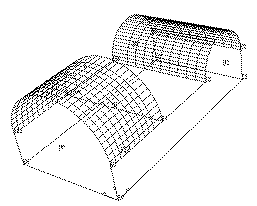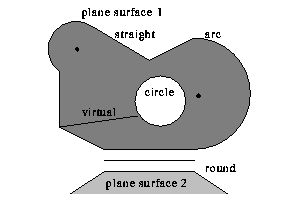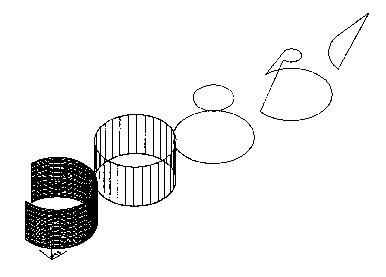


Previous: Edges Up: 3D-Modeling for the Analysis of Range Next: Results



The described tools are able to detect plain and cylindrical surface patches, so these are the two existing kinds of surfaces.

The addition of more surface models, if corresponding detection tools are developed, is intended.
Both surface types are bounded by edges, so they are described by a closed loop of edges. This means that the end of one edge is the start of the next one. The end of the last edge is the start of the first.

Plane Surfaces are finite parts of a plane. An infinite large geometric plane is cut in two parts by a closed loop of edges (Figure 9). The parts with the finite area is the inner side. All bounding edges and their vertices are in this plane. The orientation of Circular Edges is identical to the surface normal.

| geometry | circular edges | radii | straight edges |
|---|---|---|---|
| cylinder | circles | equal | virtual |
| cylinder segment | arcs | equal | straight or rounded |
| cone | circles | one equals zero | virtual |
| Cone segment | arcs | one equals zero | straight or rounded |
| frustum | circles | unequal | virtual |
| frustum segment | arcs | unequal | straight or rounded |
Cylindrical Surfaces (Figure 10) are defined as follows:
The number of surface types is not restricted. If a new tool for detecting a certain structure in the range data is developed, a new surface model may be added.


